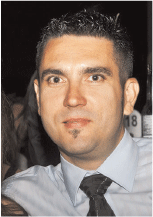Amplitude-versus-offset (AVO) screening in frontier basins: an example from the Gulf of Papua, Papua New Guinea
A. Harrington A , C. Reiser A , B. Burmaz A and R. Reed APetroleum Geo-Services.
The APPEA Journal 52(2) 701-701 https://doi.org/10.1071/AJ11115
Published: 2012
Abstract
A resurgent interest in the gas potential of the Gulf of Papua has been enhanced by the recent announcement of developing new LNG facilities in Port Moresby. Petroleum Geo-Services (PGS) has recently acquired a 6,000-km2 Multi-Client 3D (MC3D) survey in the gulf. Although most of the discoveries in PNG are from the highland areas, the gulf is a proven hydrocarbon province with gas/condensate accumulations previously discovered in several reef build-ups.
It is thought that sediments from the Papuan Fold Belt produced clastic dominated deltas in the Gulf area. Although this play is untested offshore, there is evidence these sandy facies exist and could contain hydrocarbons. On the first phase of acquisition/interpretation, an efficient screening workflow called Prospect Scanner, developed to highlight areas of AVO effects in large 3D seismic datasets, was tested. It uses pre-stack seismic time migrated (PSTM) gathers to extract AVO attributes that are then inverted to derive relative acoustic and shear impedance volumes. Using idealised cross-plots, the relationship between Vp/Vs ratio and the Ip values gives a good indication of the fluid and lithology of the tested interval.
The results are loaded into a conventional interpretation package for interpretation/visualisation. Prospect Scanner has highlighted previously undrilled turbidite and basin floor fan prospects in the region. The Vp/Vs versus Ip cross-plot shows clustering of the sand anomaly and good separation from the majority of the plot. These points correspond to the idealised location for a gas sand. Past concerns about lateral prediction of reservoir presence and quality associated with the basin floor fans can be addressed through this workflow.

Amanda Harrington received a first-class honours degree in exploration geophysics from Curtin University of Technology in 2003. She received the Elwood Horstman Award for her thesis about anisotropy on the North West Shelf and was awarded top petroleum student. Since graduating, Amanda has worked for RPS Energy and Nido Petroleum Ltd. She joined Petroleum Geo-Services in Perth in 2008 and is now senior geophysicist/area coordinator for the reservoir team in Singapore. She specialises in seismic interpretation and regional basin analysis. Member: SEG and ASEG. |

Cyrille Reiser joined PGS Reservoir in August 2008. He is responsible for the Global Reservoir Characterisation team and activity for PGS Reservoir, which cover operational, technology, and business development. He has extensive experience in business development, project management, technical supervision, liaison with different business units, and client management. He has extensive technical knowledge in rock physics, feasibilities, pore pressure prediction, AVO analysis, seismic inversion, and time-lapse. He holds a PhD from Lyon’s Ecole Normale in ‘Automatic recognition of genetic sequence and sedimentary bodies by wireline log shape analysis’, sponsored by Elf. He has strong knowledge of geoscience: from geology, interpretation to seismic quantitative interpretation. Member: EAGE, SEG, and PESGB. |

Bob Burmaz received a BSc (physics and mathematics) from Murdoch University, PGDip (exploration geophysics) from Curtin University, and PGDip (oil and gas engineering) from UWA. He started his career with Western Geophysical in 1995, then he joined Petroleum Geo-Services in Perth in 1997 where he is now processing supervisor within data processing. Most of that time has been spent on 3D marine surveys and more recently on 2D GeoStreamer surveys. Member: PESA and ASEG. |

Rod Reed received a BS from the University of Iowa. He is the MultiClient geophysical manager for Petroleum Geo-Services Asia Pacific. He began work in the industry in data processing for GSI in Houston in 1981. Most of Rod’s career has been spent working with marine 3D surveys and special projects, but he spent three years in Oman processing land 3D surveys, and one year in India working on the Bombay High API. From 1999 to 2006, he was Asia Pacific regional data processing manager for Petroleum Geo-Services based in Perth. Member: European Association of Geoscientists and Engineers (EAGE), SEG, and ASEG. |
References
Jablonski, D., Pono, S., and Larsen, O.A. (2006). Prospectivity of the Deepwater Gulf of Papua and surrounds in Papua New Guinea (PNG)—a new look at a frontier region. APPEA Journal 46, 1–22.Pigram, C.J., Davies, P.J., Feary, D.A., Symonds, P.A., and Chaproniere, G.C.H., 1990—Controls on Tertiary carbonate platform evolution in the Papuan Basin: new play concepts. In: Carman G.J., and Z. (eds.) Petroleum Exploration in Papua New Guinea: Proceedings of the First PNG Petroleum Convention, Port Morseby, 12–14 February, 185–95.
Shuey, R.T. (1985). A simplification of the Zoeppritz equations. Geophysics 50, 609–14.
Tcherepanov, E.N., Droxler, A.W., Lapointe, A., Mohn, K., and Larsen, O.A. (2010). Siliciclastic influx and burial of the Cenozoic carbonate system in the Gulf of Papua. Marine and Petroleum Geology 27, 533–54.


